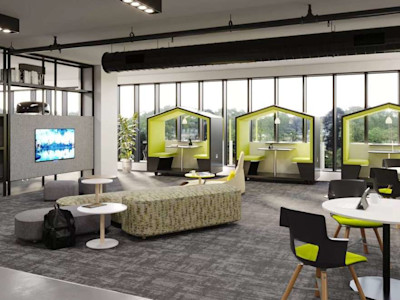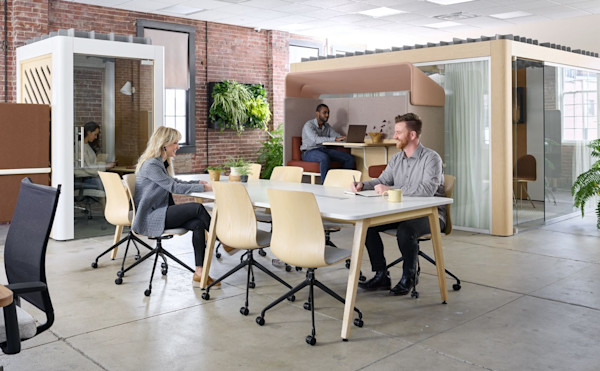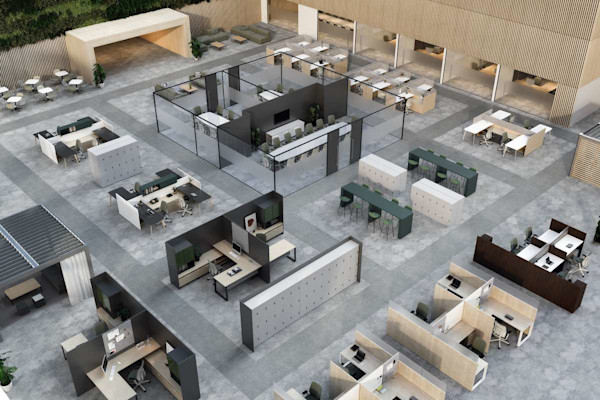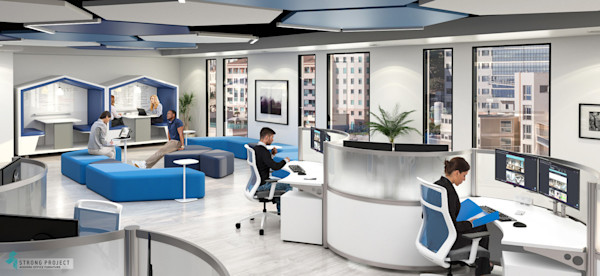Multi-Modal Office Design: Different Zones for Different Purposes

A multi-modal design goes above and beyond the traditional office space. Workers want more than just a desk and a chair. People want a reason to be there. Multi-modal spaces provide workers with all of the resources they need to excel in their positions. An efficient office space layout offers areas for people to work in solitude, collaborative spaces, and community spaces that offer a reprieve from the day-to-day. A multi-modal office layout design creates not only a workspace for employees but also an experience.
Elements of a Multi-Modal Design

An efficient office space design creates meaningful spaces that support genuine social interactions and community.
Employees use intense focus areas to work undisturbed, while formal and informal meeting spaces offer options for collaboration, allowing them to find the appropriate area. Even breakrooms can encourage social interaction. There is no wasted space in an efficient office space layout. A multi-modal office design has elements that reflect the company’s mission, culture, and social responsibility. An environmentally conscious company might use recycled goods or upcycled furniture. A company that has made diversity a part of its vision might have multicultural themes throughout the office. The main elements of a multi-modal office design are not only reflective of the company but also reflective of the workers who use that space.
Multi-Modal Design and Communication

Multi-Modal Office Designs and Diversity

**How to Implement a Multi-Modal Design

Designing a multi-modal office layout presents challenges. At times it can be difficult to anticipate your employees’ needs. You might know what employees need to do their job successfully but figuring out how to give it to them can seem difficult. Larger firms have the space and funds to create sprawling campuses with every type of space imaginable. Smaller organizations don’t have that luxury. Limited space requires creativity when designing the layout. Consider whether your company can support a hybrid model when designing a multi-modal office layout. Allowing your employees to work remotely can free up large amounts of space. Multi-modal designs create meaningful areas now that the need for desks and personal workspaces is reduced.
Encouraging communication starts with giving workers the necessary environment to excel.
Understanding employees' needs doesn’t only help you create an environment employees want to be in. You’re able to provide employees with what they need to do their jobs. The workplace is increasingly using advanced technology. Multi-modal offices can benefit from technology integration. Automated workspaces, office space scheduling software, and rooms designed to conduct video conferences can help employees do their jobs. When designing a multi-modal space, the style, brand, and look can be just as important as the functionality. An organization has an identity and that identity should be displayed throughout the office. Employees want to take pride in the organization they work for so the theme must be carried throughout the workplace. A multi-modal office design doesn’t need to have loud pops of color or distracting artwork. Finally, the brand image should be reflected in the workplace.
Hybrid Offices and the Future




